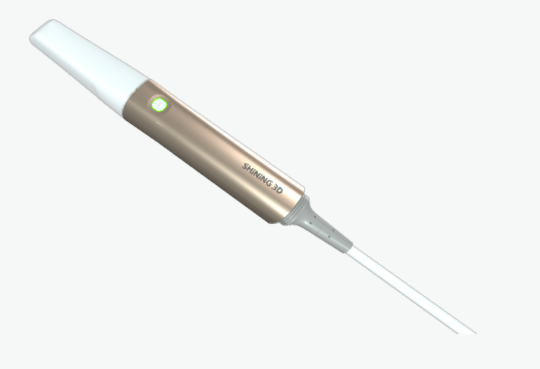In the rapidly advancing field of digital dentistry, the need for accurate and efficient tools has never been more critical. Photogrammetry dental scanners are playing a pivotal role in improving the way dental implants are planned and executed. The Aoralscan Elite by SHINING 3D DENTAL incorporates this innovative technology to offer enhanced precision in dental implant procedures, especially in challenging edentulous cases. By combining photogrammetry with traditional intraoral scanning methods, these devices help dental professionals reduce errors and improve treatment outcomes, making them a valuable tool for implant specialists and dental businesses alike.

What is a Photogrammetry Dental Scanner?
A photogrammetry dental scanner is an advanced device that captures detailed, three-dimensional images of a patient’s oral structures using the principles of photogrammetry. This technology enables dental professionals to accurately measure and record the position of implants, even in edentulous cases where there are no remaining teeth to guide the scan. SHINING 3D DENTAL’s Aoralscan Elite integrates photogrammetry with traditional intraoral scanning, combining the best of both worlds for more effective implant planning and placement.
Traditional intraoral scanners focus on capturing 3D images of the teeth and soft tissue, but they can be limited when it comes to complex cases such as those involving missing teeth or edentulous patients. By integrating photogrammetry, the Aoralscan Elite can map the entire oral environment, including the precise placement of dental implants. This provides a more comprehensive view that aids in planning and enhances the overall success of implant procedures.
Improved Implant Planning with Photogrammetry
One of the key advantages of using a photogrammetry dental scanner is its ability to improve the planning stage of dental implant procedures. In traditional methods, implant planning relies on 2D images or less detailed 3D scans, which can lead to inaccurate placements and increased risk of complications. By incorporating photogrammetry, dental professionals can now view the patient’s oral structures in greater detail and with improved spatial accuracy.
For implant planning, this means that the Aoralscan Elite can accurately capture the position of implant sites, including bone levels and anatomical landmarks. These detailed 3D images allow for precise alignment and positioning of implants, which is especially crucial in edentulous cases where the bone structure and tissue alignment can vary. By ensuring that the implants are placed in the optimal position, the risk of complications is minimized, leading to better patient outcomes.
Reducing Errors and Enhancing Implant Success Rates
One of the greatest challenges in implant dentistry is ensuring that implants are placed accurately, as even minor errors can lead to complications such as implant failure, infection, or the need for additional surgeries. The photogrammetry dental scanner helps to minimize these risks by providing more detailed and accurate data during the planning and placement stages.
By combining traditional intraoral scanning with photogrammetry, the Aoralscan Elite allows for a more comprehensive and precise scan of the patient’s oral cavity. This integration ensures that the implant procedure is based on highly accurate 3D models, which in turn enhances the success rates of implants. The ability to capture detailed measurements also reduces the likelihood of errors such as misalignment or improper depth, leading to fewer revisions and improved patient satisfaction.
Conclusion
Photogrammetry dental scanners, such as the Aoralscan Elite by SHINING 3D DENTAL, are transforming dental implant procedures by improving the accuracy of implant planning and reducing errors in treatment. The integration of photogrammetry with traditional scanning methods ensures that dental professionals can offer more precise, efficient, and successful outcomes, particularly in complex cases.
 ENG
ENG








